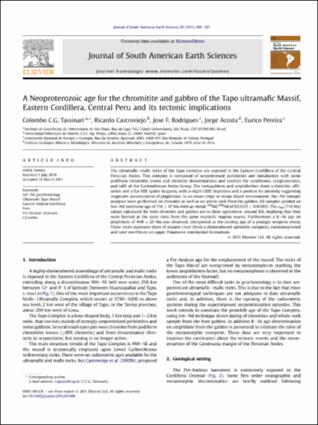Por favor, use este identificador para citar o enlazar este ítem:
https://hdl.handle.net/20.500.12544/626Ficheros en este ítem:
| Fichero | Descripción | Tamaño | Formato | |
|---|---|---|---|---|
| Tassinari-A_Neoproterozoic_age_for_the_chromitite-Version-OA.pdf | 2.5 MB | Adobe PDF | Visualizar/Abrir |
Este ítem está sujeto a una licencia Creative Commons Licencia Creative Commons












